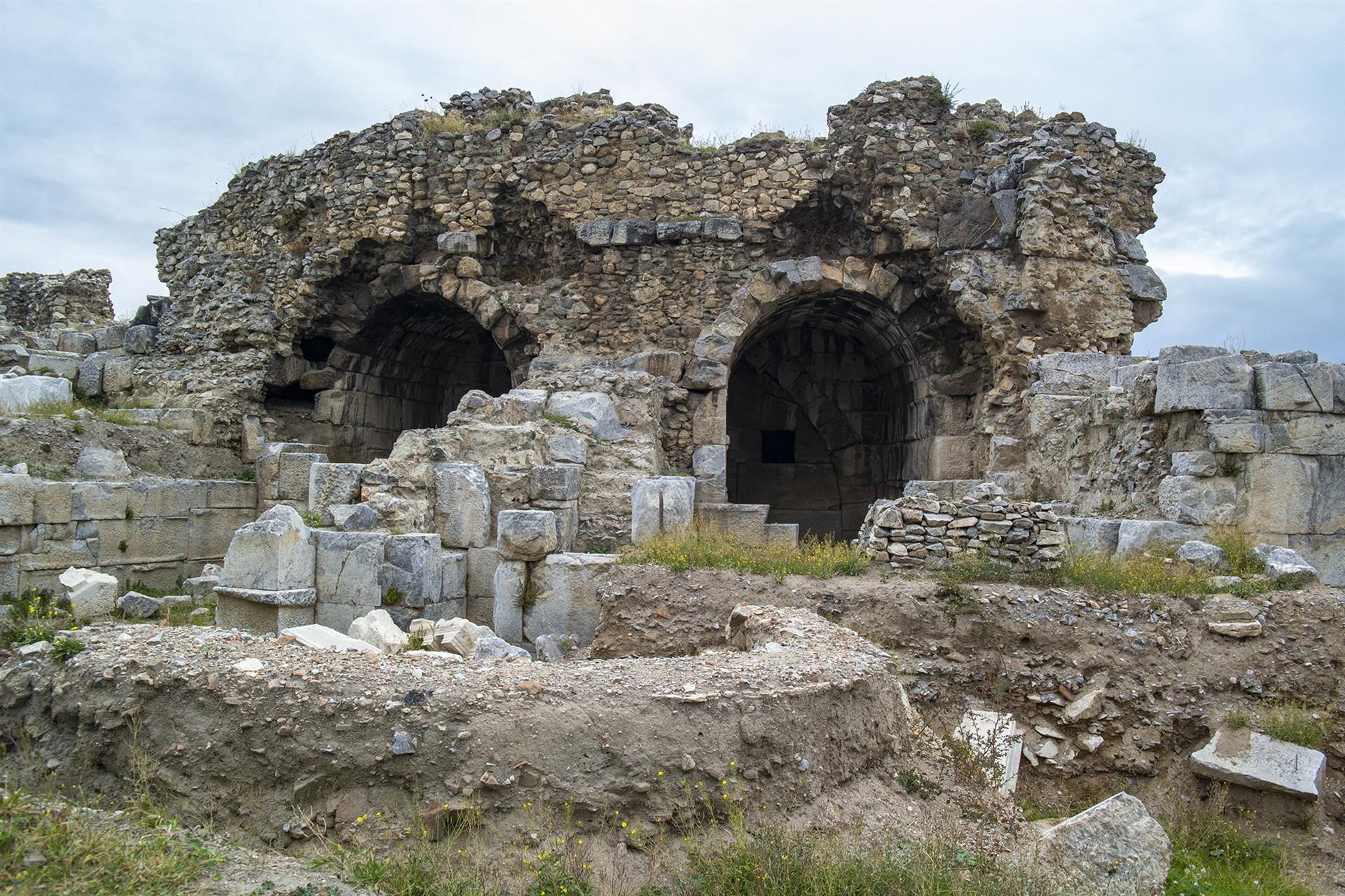
The site of an ancient Roman theater in the northwestern province of Bursa’s İznik district has been found to be much older than previously thought after archaeologists removed 1,600 tons of earth and extracted ceramics dating back to the 6th century B.C., the Ionian era.
The head of the excavations, Aygün Ekin Meriç, an archaeology professor at Dokuz Eylül University, said they found traces of life dating back to the 6th century B.C. in the field of the 2nd-century A.D. theater, which was originally a three-story one and not two like previously thought.

İznik is on the UNESCO World Heritage Site Tentative List, but officials are in intense efforts to carry it to the main list.
Founded in 316 B.C. by Antigonius Monophthalmos, one of the commanders of the Macedonian King Alexander the Great, İznik still carries the traces of Bithynia, Rome, Byzantine, Seljuk and Ottoman civilizations in almost every corner.
The Roman theater, whose excavations the Bursa Metropolitan Municipality is sponsoring, is one of the most magnificent structures of Anatolia.
The theater, which is the only example in Turkey in terms of its architecture, was built by historian and writer Plinius, the governor of Bithynia at the time of the Roman Emperor Trajan in the 2nd century.
Having hosted gladiator fights for some time, the theater was used as a religious area after a ban on theaters after Christianity.
The theater received damage during big earthquakes in the years 358, 362 and 368. It was later restored, but was damaged again during a war in İznik. Its pieces were used for the reinforcement of the city walls.
The excavations in the İznik Theater started in 1980 by Bursa Museum official Bedri Yalman and continued until 2006, working on caveae—steps where viewers sit in ancient theaters—vaulted galleries and the front side of the stage.
The works carried out by the team headed by Dokuz Eylül University’s archaeology department since 2016 have also unearthed many other important findings.
Meriç said they had finished the 2018 excavation term.
“From the historical records, we know that the Roman theater was built in the 2nd century A.D. However, we found ceramics belonging to the Ionian period, which dates back to 6th century B.C. This is really important. In other words, there was life before the theater was built,” she said.
Meriç said another important discovery was the height of the theater. “During the foundation excavations, we found the stakes the third floor of the theater is bearing. It was discovered that the theater was not a two-story building but a three-story structure. We reached the base of 28 elephant foot pillars bearing the third floor. The colonnaded galleries in front of the theater also had multiple stories. The excavations of the theater were almost done. It will be finished next year and the restoration will begin. The theater shows us a broad history of İznik. This multi-layered İznik history will be seen by those who visit the theater.”
She said around 1,000 cubic meters (1,600 tons) of earth had been removed in the last three years from the site.
Bursa Mayor Alinur Aktaş said İznik was not only important for Muslims, but also for Christians.
“I believe that İznik, a UNESCO World Heritage nominee, will be added to the main list when these works are completed. One of the most important artifacts in İznik is the Roman theater. The excavations carried out this year revealed that the theater has a history dating back to the 6th century B.C. It has been understood that the building was a three-story building with vaults. I hope the restoration will start next year,” the mayor said.